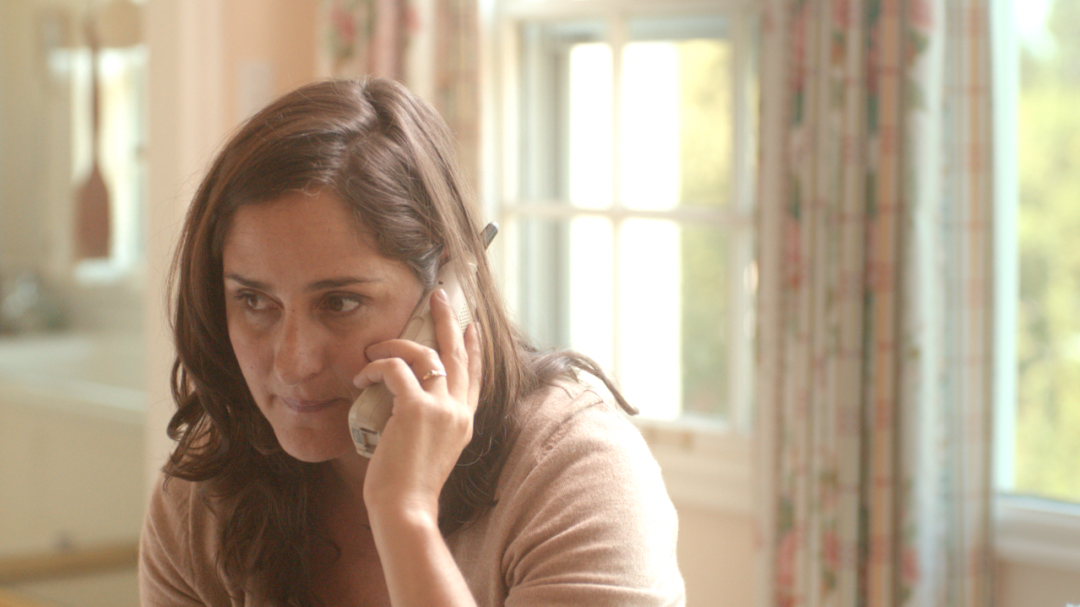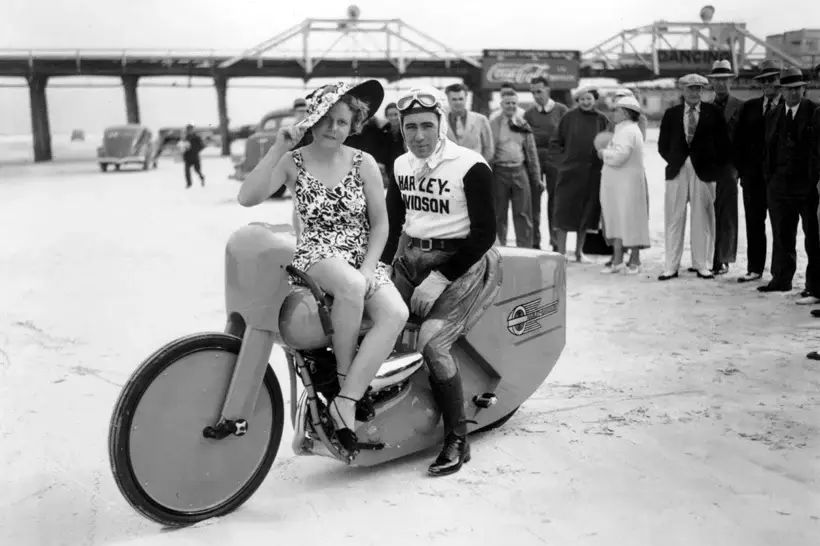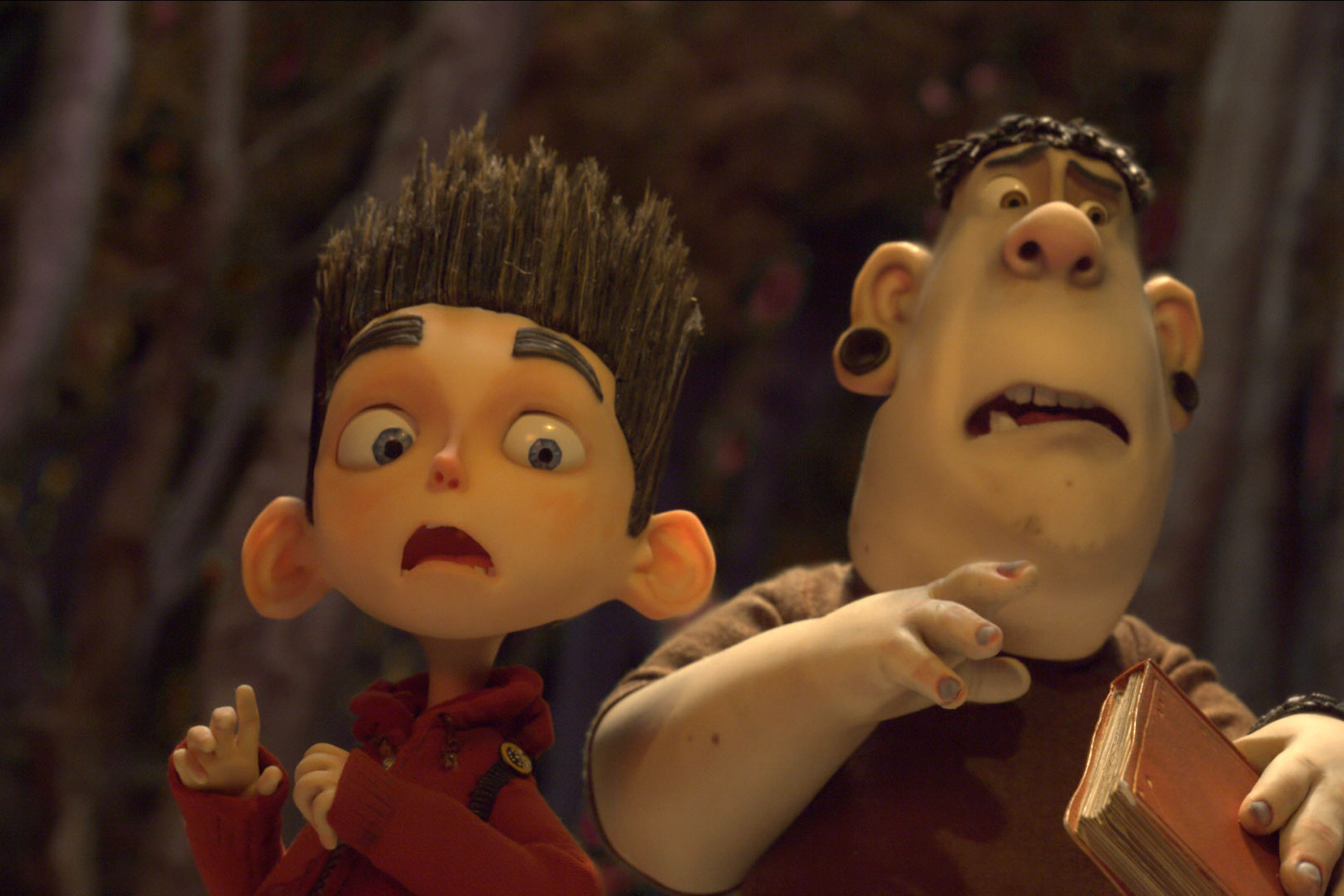5 Questions for Buoy Director Steve Doughton

Portland filmmaker Steve Doughton describes his debut feature, Buoy, as “My Dinner with Andre meets The Deadliest Catch.” An apt comparison, given it sustains the minimalist and dialogue-heavy approach of the former without sacrificing the palpable, ever-present tension of the latter, as it explores the complicated connection of siblings—“a relationship that is underrepresented,” says Doughton.
The film stars Tina Holmes as T.C., a 30-something suburbanite mother of two, who receives an unexpected phone call from Danny, her brash-but-charming wayward brother (voiced by Matthew Del Negro). The entire course of the ballsy 85-minute film consists simply of their phone call, ranging through topics of fidelity, near-death experiences, psychotropic drugs, and their shared past, as T.C. goes about her household routines.
With a background in experimental film, Doughton isn’t afraid of taking artistic risks. Here, he offers an evocative, stripped-down, starkly beautiful film that was named Favorite Narrative Feature at the 39th Annual Northwest Filmmakers’ Festival. “Buoy is a powerful, deeply engrossing meditation on family, middle class alienation, and love…a dramatic, emotionally gripping excavation of contemporary life, exquisitely controlled and grounded in its pitch-perfect performances, writing, and direction,” says the film’s executive director, Todd Haynes, who you might know for his own films, including I’m Not There, Far From Heaven, and Velvet Goldmine.
Buoy plays at the Hollywood Theatre from Wednesday through Monday at 7:30. Doughton will be in attendance for a Q&A with the audience after Wednesday’s screening.
Culturephile: There’s been a lot of response to the minimalist approach to the film. How did you decide to focus the film on T.C.? Was that the idea all along or a choice you made along the way?
Steve Doughton: That started at the inception. Once I decided it would be a phone call, I decided the film would be entirely on her. I like the idea of the radical purity of it. Tina had the whole script memorized like a play. I think the longest take we shot was 20 minutes, and she did the whole thing beginning to end multiple times. She’s an outstanding talent. Matthew was great but he had the script in front of him. He was not on camera, so he didn't have to do that memorization. He was in another room in the house on a microphone.
I wanted to go for the static camera because it would allow us to shoot quickly and efficiently—we had little money and only five days to shoot—but it also helps give a sense of [T.C.'s] isolation. I thought, if I start moving the camera, it'll look like I'm afraid, that I have to jazz up the film. I thought, just go for it. It's a woman on the phone. That's what we're going to see. And how do we make that visually beautiful?
Tina Holmes is fantastic in this role. How did that collaboration come about?
I’ve known Tina for 20 years. We formed a little production company in the early 90s, and we did music videos for Iggy Pop, Pavement, Blonde Redhead, Aphex Twin.
I sent her the script a couple of years ago. I wrote it with her specifically in mind. We were supposed to shoot in the summer of 2010, but she had just had her second child and was afraid she wasn’t able to do it, and I said I’d being willing to postpone the filming for a year.
The film’s producers include a plethora of local talent, such as Todd Haynes, David Allen Cress, Jonathan Raymond. How did they come to be involved?
Pure nepotism. I met Jonathan Raymond [in New York]. I was at a Bruce Nauman exhibit at MOMA. I saw this group of kids, and one of them was wearing a “Portland” t-shirt. I approached them and asked if they were from Portland, Oregon or Portland, Maine. It turned out to be Jon Raymond.
A few years later, I made this film that he had heard about, and he wanted to interview me for this magazine in Seattle. So, he got my number and called me up: “My name’s Jon Raymond, I’m writing for a magazine and, by the way, were you at that Bruce Nauman exhibit?” We became friends and collaborated on a couple of scripts together. In the meantime, he and Todd [Haynes] became friends, so I got to know Todd through him. I knew David [Cress] in high school. He’d expressed interest in making a film with me.
It’s really through friendship that their involvement came about.
Why do you think creative folks flock to Portland?
You can be here and be broke. If you're going to have no money—like most young artists—this is a good place to do it. New York now is so expensive. I don't know how young artists survive there. I can't imagine. I moved to the East Village in 1983 with $600 and no job. You can't do that now. I think you can do the equivalent here in Portland.
What’s next for Buoy, and what’s next for you, Steve Doughton?
I'd love to screen it in Ashland, in New York—you know, do a tour with it. Our plans are to release the DVD on Amazon sometime soon. We'd like to do video on-demand with it.
My next plan is to adapt a short story from Jon Raymond. I've got three other scripts ready to go, and a fourth I'm working on. I've spent the past 15 years writing, stockpiling things. I've realized it's good to have a next project in the wings because if not, you can stop the momentum.




